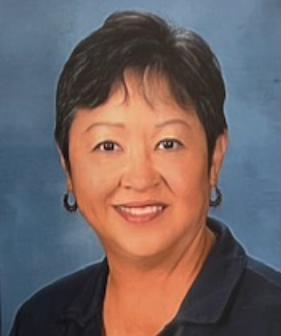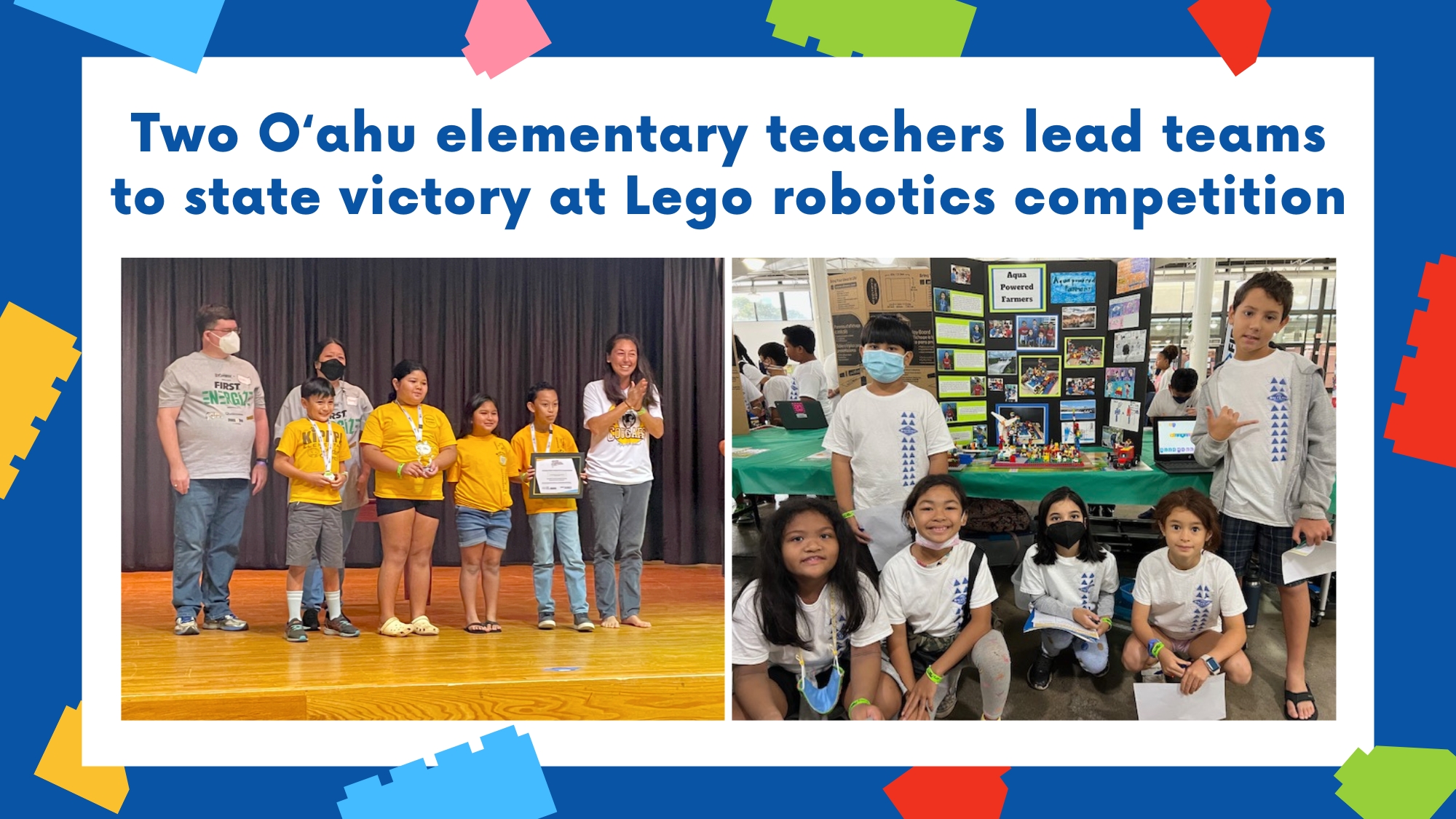Hawaiʻi public school students designed winning renewable energy projects
Posted: February 1, 2023
Two Oʻahu elementary teachers led their Lego robotics teams to victory at the 2022 First Lego League Explore State Festival at the Neal S. Blaisdell Exhibition Hall this past December.
Kīpapa Elementary third grade teacher Kori Ann Harvey Oros and Salt Lake Elementary third grade teacher Renee Elizares coached the winning lego robotics teams from their respective schools, where they won as state co-champions of the Explore Category (kids ages 6–10).
Drawing on the 2022 theme “Superpowered,” students were challenged to create a motorized, coded Lego model of their choice to imagine a better energy journey. The two Hawaiʻi public schools teams bested 24 other teams from private schools, homeschool, and other community groups.
Oros’ winning team of four students, the Cougar Cubs Hydromasters, conceptualized a backyard mini hydroelectric dam with a water wheel that supplies electricity to a family home. The home has a battery to collect and store energy until the family needs to use it.
Elizares’ winning team, the Aqua Farmers, consists of six students who conceptualized a project inspired by the Farm Fair. Their project — half farm, half carnival — is powered by a dam and incorporates buildings, a wind turbine, a carousel, an electric storage model, and a motor hub.
Lego robotics incorporates elements of science, technology, engineering, and mathematics (STEM) to help students build hands-on projects using critical thinking, coding, and design skills.
The First Lego League, a global organization that promotes STEM learning from an early age, has a Hawaiʻi chapter that coordinates robotics tournaments and expos for teams of students ages 6 through 18 in Hawai’i. The organization hosts an annual robotic and research challenge based on real-world issues where participants must use a Lego Mindstorm robot kit to build their project.
Leading a team to victory at Kīpapa Elementary
Oros, who has been an educator for 14 years and is also HSTA’s Government Relations Committee Vice Chair, has been coaching Lego robotics for about 13 years. She credits second grade teacher Stacie Tateyama for introducing her to the concept, initially as an afterschool activity.
Oros eventually brought robotics into her classroom, and developed a good understanding of how the coding programs work, as well as how the different pulleys and levers play with each other to reach a desired outcome.
She said, “I have a passion for teaching kids about energy. These things are important for all of us that live in the world.”
Before the state competition, the entire third grade at Kīpapa made Lego models, as Lego robotics is now a part of the school’s curriculum. Upon finishing, they presented their projects to their families before being considered as a state contender by administration.
“Families didn’t quite grasp what we’re working on and what their kids were capable of. Their families were blown away. Some of them had no idea that Legos even moved,” Oros said.
All third grade teams, 20 in total, presented to Kīpapa’s administration who then voted on one team per classroom to send to the state competition.
When her students found out they won, Oros said they were “screaming and yelling and jumping, and literally rolling around on the ground. I cried, too. They deserve it so much! Especially in public education, for these kids to have that opportunity to create something and share it and learn so much about real-world issues, it was incredible.”

Salt Lake Elementary third grade teacher Renee Elizares.
Veteran teacher ‘building a community of learners’ at Salt Lake Elementary
Like Oros, Salt Lake Elementary teacher Elizares learned robotics from a colleague who taught it after school. Once her colleague moved into a curriculum coordinator position, Elizares recruited other teachers to help teach robotics, and now the school has teams at the third and fourth grade levels.
Elizares, who has been teaching for 30 years, said that when her students got stuck on a problem with their model, they would all talk about it and research it together, then vote on what they wanted to do. The discussion and enthusiasm of the kids was always palpable.
“These are the engineers of our future. They are going to solve our problems. These projects are good practice. If they work hard, they can do anything they want,” Elizares said.
“I want to see more public schools do it, to build this community of learners,” she added.
As state champions, both teams earned potential spots in the First Lego world championship in Houston this April. Elizares said Salt Lake Elementary declined the opportunity due to cost concerns. Meanwhile Kīpapa Elementary has been put into a lottery along with teams from other states and countries, and Oros is hopeful for an invitation.
“It’s a lot of work designing a unit from scratch, and it requires buy-in from the teachers, support from the admin and families,” Oros said. “There were a lot of extra hours put into this. Most of these students do not come from privileged backgrounds. One student mentioned she had never been on an airplane. To see them collaborating, working hard, and having that hard work recognized is what it’s all about.”
Header image, from left: Kīpapa Elementary’s winning team, the Cougar Hydromasters, with Kori Ann Harvey Oros pictured far right; Salt Lake Elementary’s winning team, the Aqua Famers.

